A team of students from the University of Oklahoma is working on a High Altitude Balloon capstone project for their spring 2021 semester. This project is under the guidance of Dr. Thomas Hays KI5AIF. Their project goal is to design and launch a number of high-altitude balloons to circumnavigate the globe. These four students all obtained their amateur radio licenses on March 4th, 2021, to support this effort. The balloon finished the year with a presentation to the SCARS group on May 8th, 2021. A video of this presentation is at this link.
Balloon 4 – Made it to North of Lake Erie
The fourth balloon launch happened a 2:15 pm on 4/8/2021. Early reports look good. This is a two foil balloon configuration that should go near 30,000 ft.

For those of you interested in what a launch looks like, here’s a video of today’s launch.
Balloon 3 — Met its Demise in Newfoundland
The third balloon launch happened at 10:30 am on 3/28/2021. Early reports have it south of Ardmore, over Kingston, OK at 43,000 feet heading east at 66 MPH, with the callsign KI5OLS. You can track this on APRS.fi at this link. You can also listen for them on 20-meter WSPR at this link. It has settled in at 43,000 so maybe this one will have some longevity!
No real change in the design for this launch. This is an SBS 13 balloon envelope and the same power film 4.8 V solar panel. New capacitors that weigh a gram lighter, two 3V 2F caps.
The predictions are worthless right now. They say it should go east and then north, or north and then east…
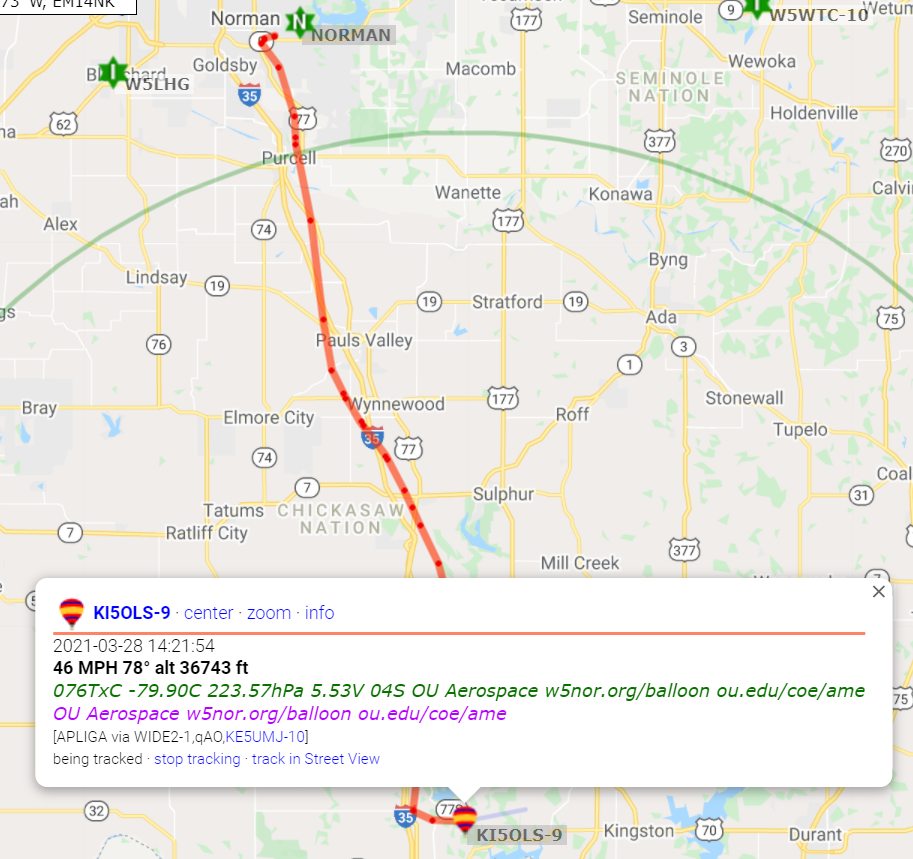
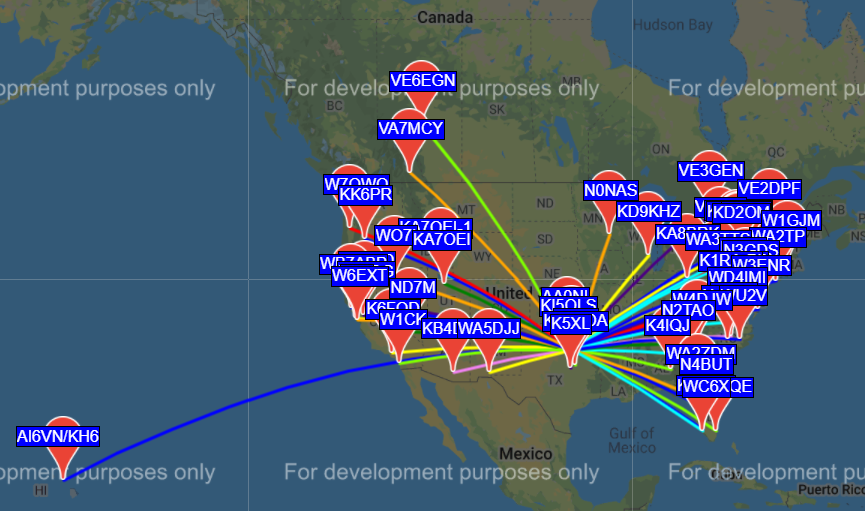
Day 2
The KI5OLS balloon woke up over the Atlantic Ocean this morning, March 29, 2021. Making good time to the east.
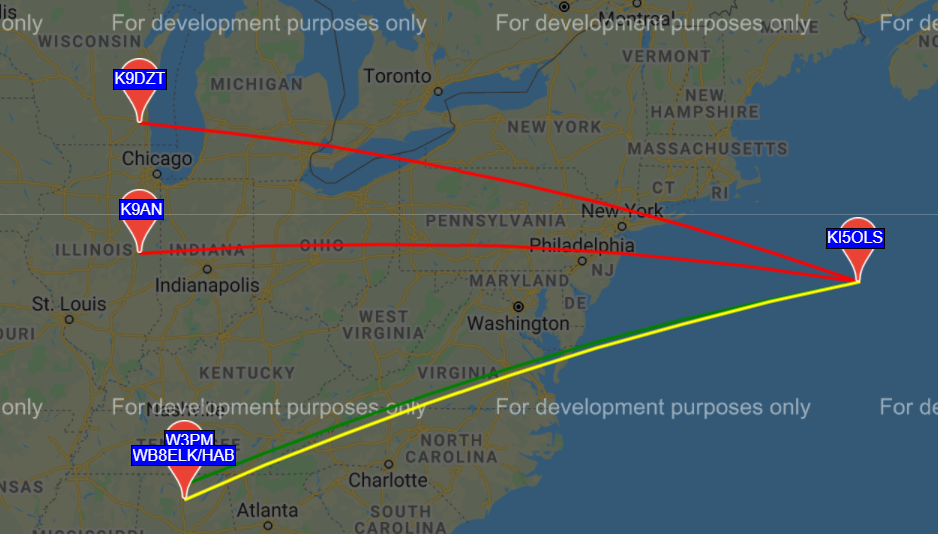
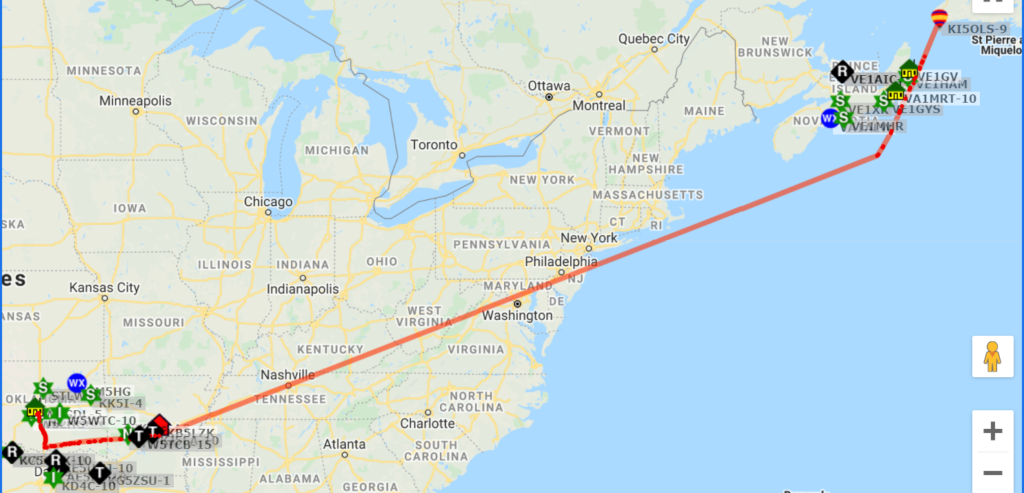
Balloon Number 2 — Met its Demise in NW Arkansas
Launch
Launch number 2 left at 3:41 pm on 3/23/2021. This effort is using the QRP-Labs LightAPRS-W tracking device to output up to 1 watt on VHF (144.39 MHz) and 10 mW on 20 meters at 14.0956 MHz. An SBS-13 high altitude balloon with about 6.5 grams of free lift is going to be used, with a couple of 50 mA solar panels, and a 1.5 F supercapacitor. A 19.25″ vertical antenna is used for the VHF transmitter and a 1/2 wave 36 gauge wire dipole is used for the 20-meter transmitter. The first night’s position at dark was just south of Tecumseh, OK at 11,324′ ASL. The launch team reported some issues during launch that may have tangled the antenna and solar cell. There is also some confusion about the wiring of the solar cells. They report no diodes were installed to keep the ‘dark’ cell from draining the ‘light’ cell. More later.
Day 2
On the second day, four WSPR transmissions were heard at 11:28, 15:28, 15:34, and 15:38 Central time. WSPR only provides a four-digit Maidenhead Grid Square, so it’s somewhere in Northern Arkansas or Southern Missouri. Somewhere on the image below, and it looks like the wind vectors are swirling around the balloon.
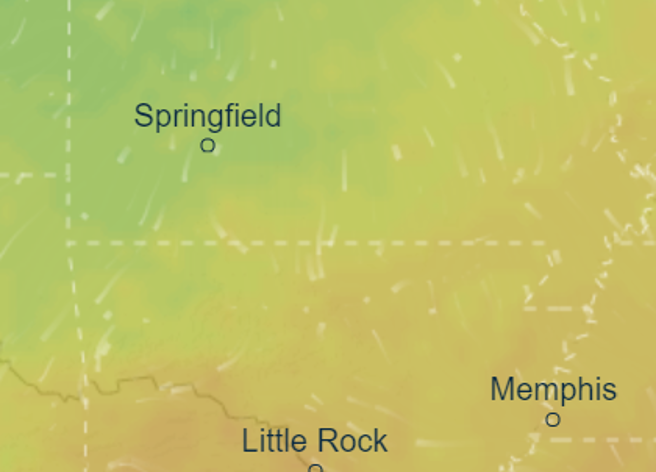
The predictor shows that the balloon should keep going northeast to Nova Scotia.
Day 4+
We’ve heard pulses from balloon 2 from the same EM36 location. Our guess is that the transmitter is swinging from a tree.
Balloon Number 1 — Went Down Overnight in SW Oklahoma
You can view the APRS process of this balloon by visiting the APRS.FI website.
Their first effort has been tested and is ready to launch as of 3/4/2021. This effort is using the QRP-Labs LightAPRS-W tracking device to output up to 1 watt on VHF (144.39 MHz) and 10 mW on 20 meters at 14.0956 MHz. An SBS-13 high altitude balloon with about 6.5 grams of free lift is going to be used, with a 100 mA flexible solar panel, and a 1.5 F supercapacitor. A 19.25″ vertical antenna is used for the VHF transmitter and a 1/2 wave 36 gauge wire dipole is used for the 20-meter transmitter.
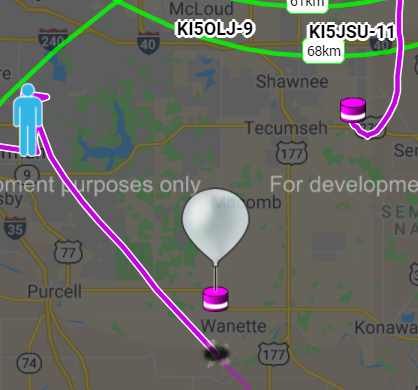
Follow along here, and we wish them luck. Many thanks to Tom Medlin W5KUB for his help and guidance throughout this project.
